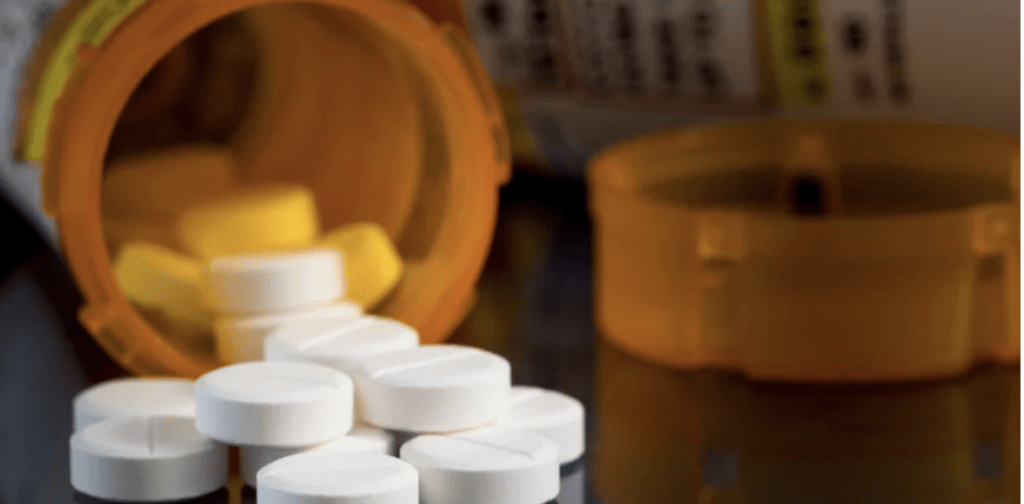Our explainer on heroin, meth and other misused opioids: statistics, news, legislation, treatment, recovery, how to find help and resources
By Jason Langendorf
The statistics associated with opioid misuse and addiction are staggering. In the United States, 128 people die every day from an opioid overdose. That’s 47,000 deaths a year. Between 1999 and 2018, almost 450,000 people died due to an overdose involving an opioid. It’s like the entire population of Miami or Minneapolis being wiped out by overdoses on a single class of drug.
Mortality rates aren’t the end of the human toll of opioids. The evidence of lives and livelihoods ruined, relationships broken and generational trauma can be witnessed everywhere—in cities and rural communities, across race and class lines, from coast to coast. More than 1.6 million people every year are arrested on drug charges, an estimated 65% of the U.S. prison population has a substance use disorder (SUD), and individuals released from incarceration are at exceptionally high risk of an overdose in the subsequent weeks.
If you or someone you know is struggling with opioids, call the SAMHSA national helpline anytime: 800-662-HELP (4357)—24/7 and 365 days a year.”
Further, the COVID-19 pandemic has stretched thin resources and compromised treatment systems at a time when at-risk and recovering individuals are at perhaps their greatest need. The economic picture is similarly grim: In America, the annual cost associated with prescription opioid misuse is an estimated $78.5 billion.
Hopeful Highlights in the Opioid Battle
That isn’t to say we should be without hope.
Recent legislation has pumped funding into prevention and treatment programs, and efforts to decriminalize—or at least reduce the stigma and punitive aspects associated with addiction and the use of substances like opioids—are gradually gaining momentum. New technologies and therapies show promise in addressing the harm of opioid use.
In the United States, 128 people die every day from an opioid overdose. That’s 47,000 deaths a year.”
With President-elect Joe Biden due to enter the White House in January, advocates and experts are optimistic that his family experiences with SUD and addiction will help create an environment that is more empathetic and will drive key changes, delivering timely and appropriate treatment to more of those in need and finding solutions that begin reversing the upward trend of opioid overdoses and addiction.
TreatmentMagazine.com is continuously tracking the news, research, important developments and public opinion about opioids. Here, we track the key issues for opioids; include links to more information, tools and educational materials; and point to ongoing coverage on our site. We’ll be regularly updating this page with new information and invite you to bookmark it and return here often to stay up on new developments.
The Big Issues
Efficacy: Opioids were designed to bind to opioid brain receptors in nerve cells to dull the pain sensation in the user. They remain a highly effective pain-relief medication and are frequently prescribed by clinicians. But opioids are too often misused and highly addictive. Because they have important medical functions and are legal drugs, opioids tend to be easy to access and difficult to regulate.
Legislation: A flurry of federal acts passed within just the past five years underscores the seriousness of the opioid problem in America, as well as the growing efforts to address it. The Comprehensive Addiction and Recovery Act (July 2016), the 21st Century Cures Act (December 2016), the SUPPORT for Patients and Communities Act (October 2018) and the CARES Act (March 2020) have collectively delivered funding, regulation changes and/or education and training designed to improve the public and private response to the opioid epidemic.
Big Pharma: Lax regulation and monitoring of the distribution and prescription of medical opioids, as well as dangerous incentives for clinicians to push them on patients, have fueled the opioid epidemic. Pressure to hold pharmaceutical companies to account may be at an all-time high: Purdue, the maker of OxyContin, was hit with unprecedented federal penalties in fall 2020. But it’s unclear whether they will be enough to deter the drug maker—or others—from the bad-faith practices that put patients at risk.

Fentanyl: A synthetic opioid that is 50 to 100 times more potent than morphine, fentanyl was designed to treat post-op and cancer patients suffering from severe pain. In recent years, it has penetrated the street market, often used to cut or replace heroin, cocaine and other substances—with lethal effects. Fentanyl is extremely addictive and has a high overdose rate when taken in larger doses or with other substances.
Medication-assisted treatment (MAT): Buprenorphine, methadone and naltrexone are MATs approved by the Federal Drug Administration (FDA) in the treatment of opioid use disorder (OUD). These treatments help normalize brain chemistry, reduce physiological cravings and block the euphoric effects of opioids. Critics object to the taxpayer cost of MAT and the optics of treating people who have substance use problems with other drugs. But according to the Substance Abuse and Mental Health Services Administration (SAMHSA), MAT has been shown to:
- Improve patient survival
- Increase retention in treatment
- Decrease illicit opiate use and other criminal activity among people with SUDs
- Increase patients’ ability to gain and maintain employment
- Improve birth outcomes among women who have SUDs and are pregnant

Opioids Addiction, Treatment and Education Resources
- If you or someone you know is struggling with opioids, call the SAMHSA national helpline anytime: 1-800-662-HELP (4357). Your call is free and confidential, and assistance will be provided in English or Spanish, 24/7 and 365 days a year.
- The United Department of Health and Human Services (HHS) offers a high-level breakdown of the opioid epidemic and a resource guide from the Drug Enforcement Administration (DEA) identifying the most commonly misused drugs.
- For more detail about the opioid epidemic, the National Institute on Drug Abuse (NIDA) offers a more comprehensive view, answers commonly asked questions and tackles subjects like tolerance vs. dependence vs. addiction.
- The Opioid Response Network, developed by a coalition of addiction and SUD organizations and funded by SAMHSA, has free educational resources and training at all levels in the prevention, treatment and recovery of opioid use disorders.
- The American Hospital Association offers articles and links to other sites about opioid prescribing practices, patient family and caregiver education, advocacy and policy information, and more.
- The American Society of Addiction Medicine provides educational resources for clinicians, referral links and a free downloadable course: CO*RE/ASAM Pain Management and Opioids: Balancing Risks and Benefits.
- Public Democracy America views the opioid epidemic and response through a local lens, provides information about Medicaid’s role in addressing the issue and highlights those working on solutions.
- Find scores of opioid-related workplace tools and resources from the National Institute of Occupational Safety and Health (NIOSH) at the website for the Centers for Disease Control and Prevention (CDC).
TreatmentMagazine.com Opioids Primer
The Best Defense Against an Opioid Tragedy? Family (3/30/21)
New Pew Brief Outlines Need for Expanded Syringe Programs (3/18/21)
MAT Act Seeks to Remove Buprenorphine Restrictions (3/2/21)
New Guidelines to Direct Opioid Litigation Money (2/24/21)
Automated Texts to Track Opioid Prescriptions (2/23/21)
The Faces of Canada’s Opioid Epidemic (2/18/21)
Stigma Can Kill: Words Matter in Addiction (2/16/21)
How Will Funds from Opioid Penalties Be Used? (2/9/21)
What Is Medication-Assisted Treatment (MAT) for Addiction? (2/4/21)
A Post-COVID Addiction-Care Tsunami Is Coming (1/28/21)
Will Walmart Face Punishment for Opioid Prescription Prices? (1/26/21)
Tech Startup Tracks Illegal Opioid Prescriptions (1/12/21)
Doctor-Pharmacist Collaboration Might Provide OUD Solution (1/12/21)
How Shatterproof Is Changing U.S. Addiction Treatment (1/6/21)
Opioid Funding: Troubling Link Between Advocacy Groups and Manufacturers (1/5/21)
Pediatric Opioid Prescription Guidelines Published—Finally (12/1/20)
Pilleve App Monitors Opioid Use (11/19/20)
5 Ways to Walk the Fine Line with Prescribing Opioids (11/17/20)
Ready to Binge-Listen to Last Day? (10/22/20)
Addiction Treatment Hits the Road in Colorado (10/20/20)
Study: Drop in Overdose Deaths Not Linked to U.S. Policy (10/6/20)
New Strategies for Chronic Pain and Opioid Management (9/15/20)
Could You Be Taking Fentanyl–and Not Even Know It? (9/15/20)
A Look at the Impact of CARA on West Virginia’s Opioid Epidemic (9/2/20)
Lack of Trained Doctors Hampers Buprenorphine Treatment (8/15/20)
First Injectable Form of Buprenorphine Up for FDA Approval (7/2/20)













